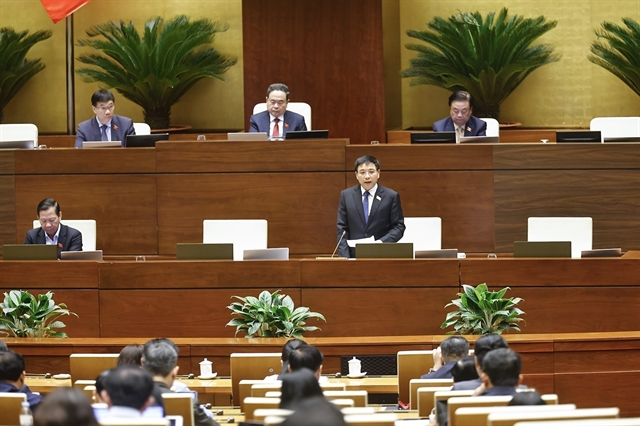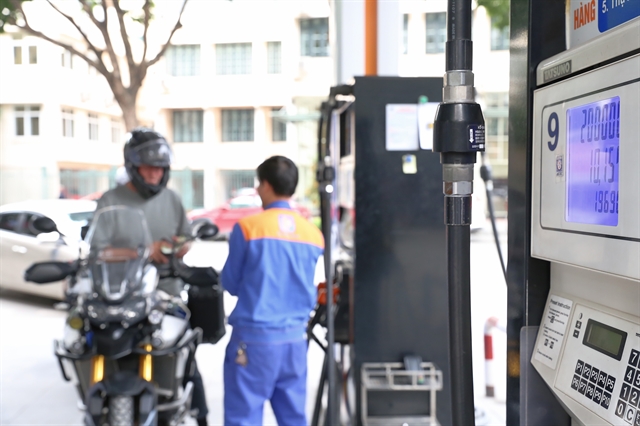 Politics & Law
Politics & Law


|
| Party General Secretary Tô Lâm, National Assembly deputy of Hưng Yên northern province, speaks at the session. — VNA/VNS Photo Doãn Tấn |
HÀ NỘI — Party General Secretary Tô Lâm said that preparing to establish Huế City had been underway for some time and the most important thing is that it must meet the criteria as defined under the central Government.
He was addressing the National Assembly (NA) where discussions on the turning of the central province of Thừa Thiên-Huế into a centrally-run city took the focus on Thursday morning.
"Becoming a centrally-run city requires a period and a transition. We hope that time is not too long," said the Party General Secretary.
He noted that localities that want to strive to become centrally-run cities must base their efforts on various criteria from planning, population, economic, social and cultural development.
Minister of Home Affairs Phạm Thị Thanh Trà said this transformation will lay the groundwork for a new urban governance model. This shift aims to enhance the effectiveness and efficiency of State management while improving the living standards of residents. By 2030, Thừa Thiên-Huế is envisioned to become a distinctive cultural, tourism, and specialised healthcare hub in Southeast Asia, and a national hub for sci-tech and quality, multidisciplinary education and training, in line with the Politburo's Resolution 54-NQ/TW.
Debate
Many NA deputies said that this is a good opportunity for Huế to develop its socio-economy, to build it into a cultural city, a land of talented people, an ancient capital with the historical and cultural stature.
However, others were still concerned as economic developments in Huế are not really outstanding, the current local budget revenue is not high, only reaching VNĐ11 trillion (US$435.8 million) and compared to other localities, it is still modest.
Huế's rural areas are still relatively numerous. Although Huế has met the standards for administrative structure, in essence, rural areas are still the main ones.
Delegate Nguyễn Lâm Thành, from Thái Nguyên northern province, said that mountainous areas of Huế such as A Lưới, Phong Điền and Nam Đông needed much attention.
Especially, A Lưới, a very large area with high and rugged mountains, will be difficult in organising activities related to urban government.
Besides, there are issues of employment, migration from rural areas to cities and migration in areas that need to be preserved, a need for creating authorities and training for staff when converting from rural government model to urban one.
"We are moving in the direction of a cultural city. This is a very suitable for Huế. However, compared to the development pace of surrounding provinces and cities, such as Đà Nẵng going towards an industrial direction, employment can meet obstacles," said Thành.
Also concerned, delegate Trịnh Xuân An, from Đồng Nai southern province, who said that the common point of upgrading a provincial-level locality to a city is that the proportion of rural and agricultural areas accounting for a large zone.
Thừa Thiên-Huế Province has urban, mountainous and rural areas, if upgraded to a centrally-governed city with an urban orientation, there will be a gap between rural areas and the remaining areas and consideration must be made to quickly bring these areas closer together.
Citing the fact that Cần Thơ has become a centrally-governed city but some districts are still "quite far behind", An emphasised that once it becomes a centrally-governed city with an urban orientation, it is necessary to solve the problem of: "bringing together the mountainous and lowland regions, between urban and rural areas".
The project identifies Huế as a heritage city, a city oriented towards green tourism, which must also take into account the pressure on urban infrastructure and surrounding amenities.
An also expressed his interest in ensuring security and order in the city, the connection between the two centrally-run cities located next to each other, Đà Nẵng and Huế, when the two cities have two international airports and two international seaports.
Law on Health Insurance
The draft amended Law on Health Insurance was discussed on Thursday afternoon with many important policies on adjusting the people participating in insurance, the scope of benefits and diversifying health insurance packages.
Delegates, experts and managers assessed that these amendments and supplements have overcome urgent shortcomings, ensuring the role of grassroots health care for the people.
After 15 years of implementation, the Law on Health Insurance has meant 93.3 million people, equivalent to 93.35 per cent of the population, participating in health insurance, affirming the correctness and suitability of the health insurance policy.
It is a mechanism to ensure financial resources for people's medical examination and treatment needs, ensuring social security and international integration.
However, some problems, shortcomings and limitations occurred that need to be adjusted, such as connection with private health insurance and medical examination and treatment registration.
Therefore, experts agreed that amending and supplementing the Law on Health Insurance is necessary, ensuring the rights of health insurance participants in accordance with health care needs and professional requirements.
In addition, the amended and supplemented law will improve the efficiency of grassroots health care operations and the efficiency of management and use of the health insurance fund.
It is scheduled that on the afternoon of November 27, the NA will vote to pass the amended Law on Health Insurance. — VNS




